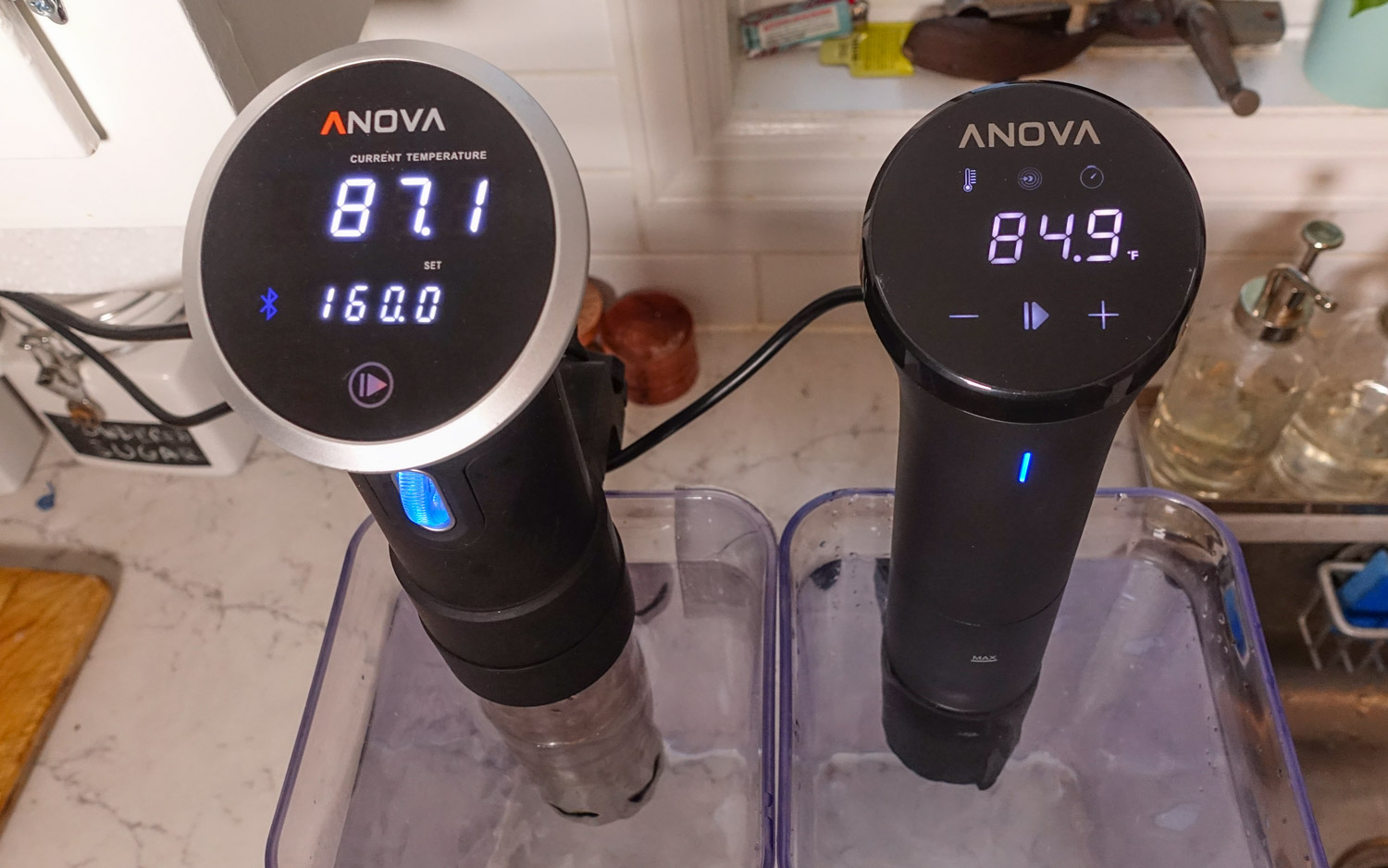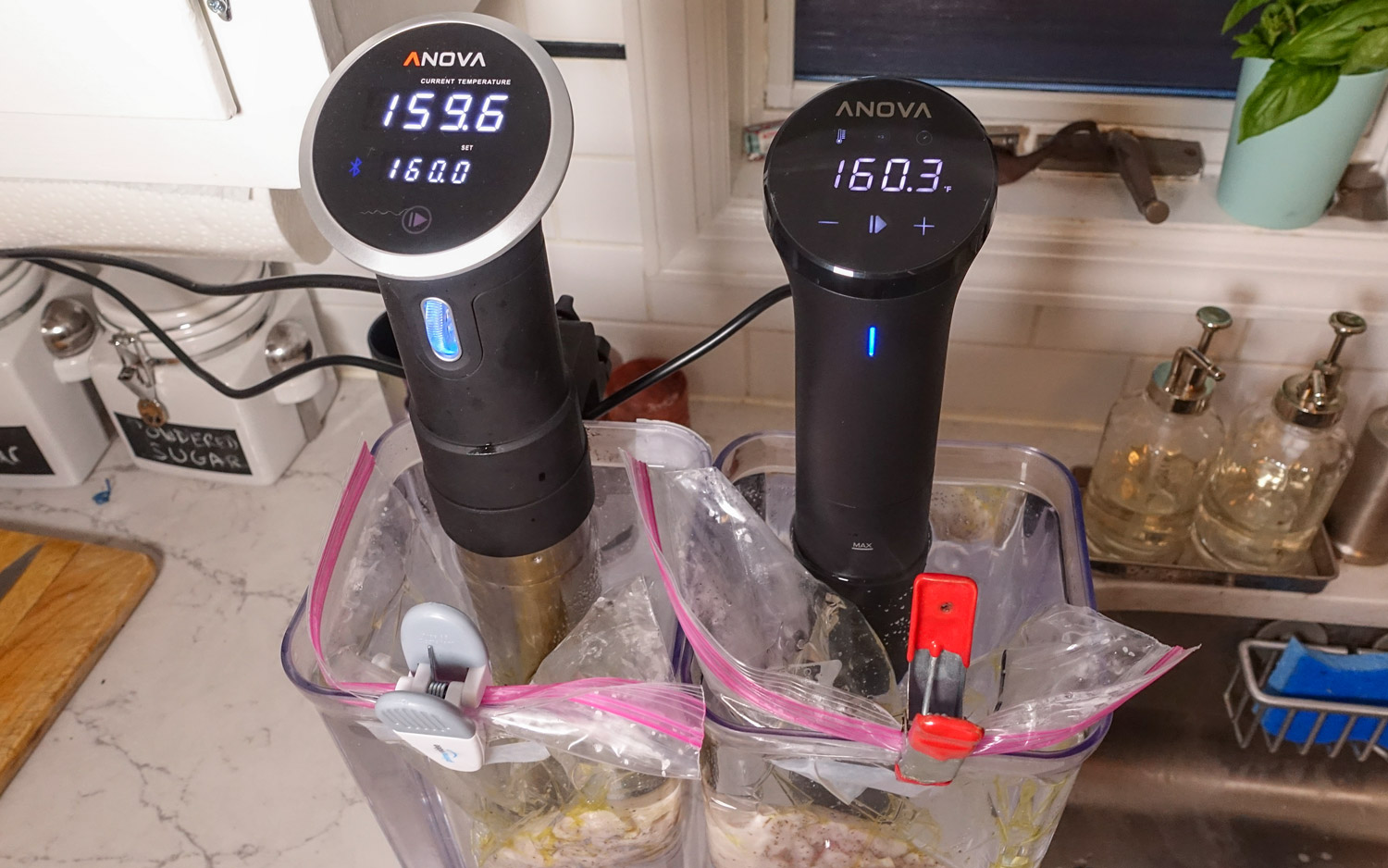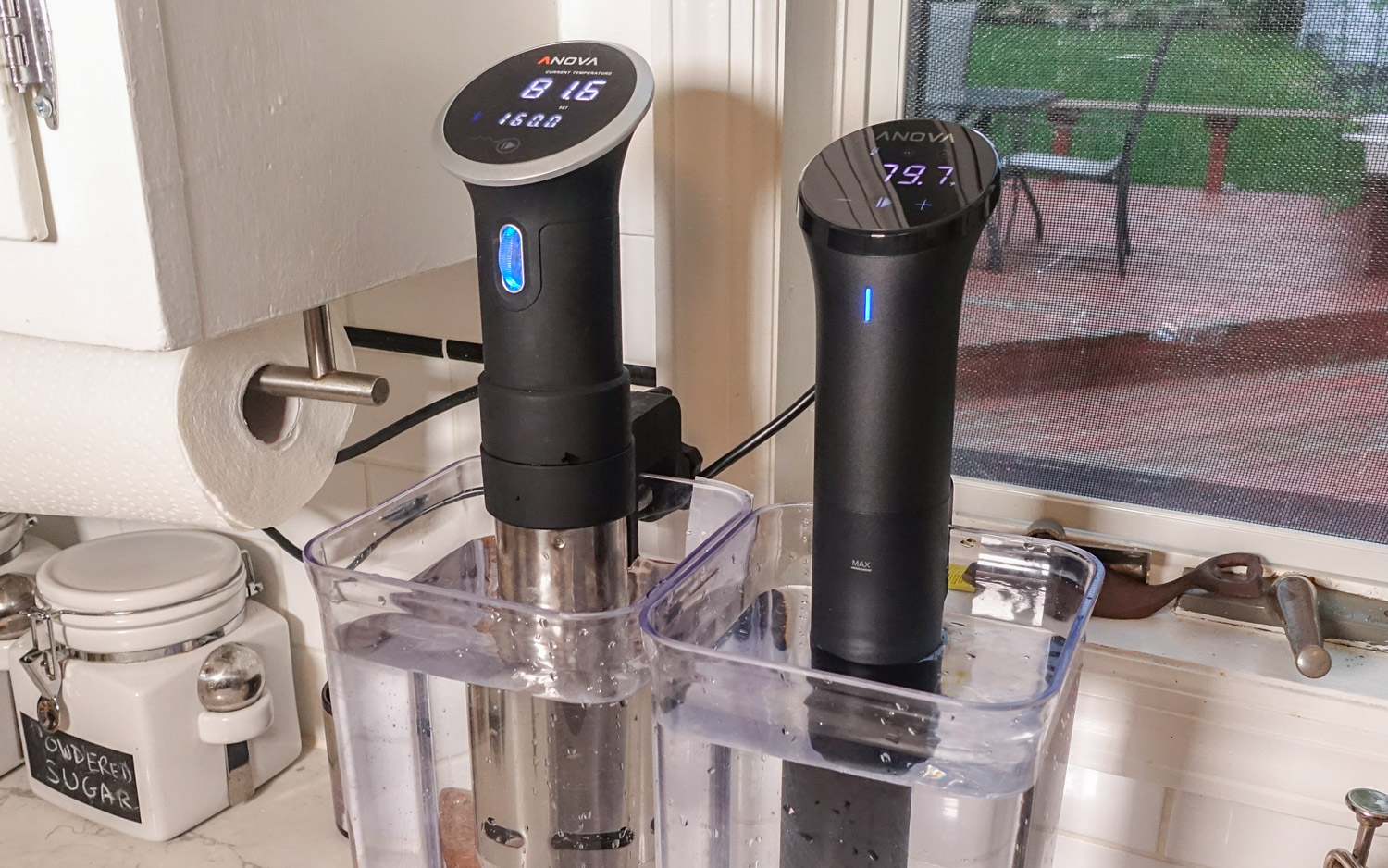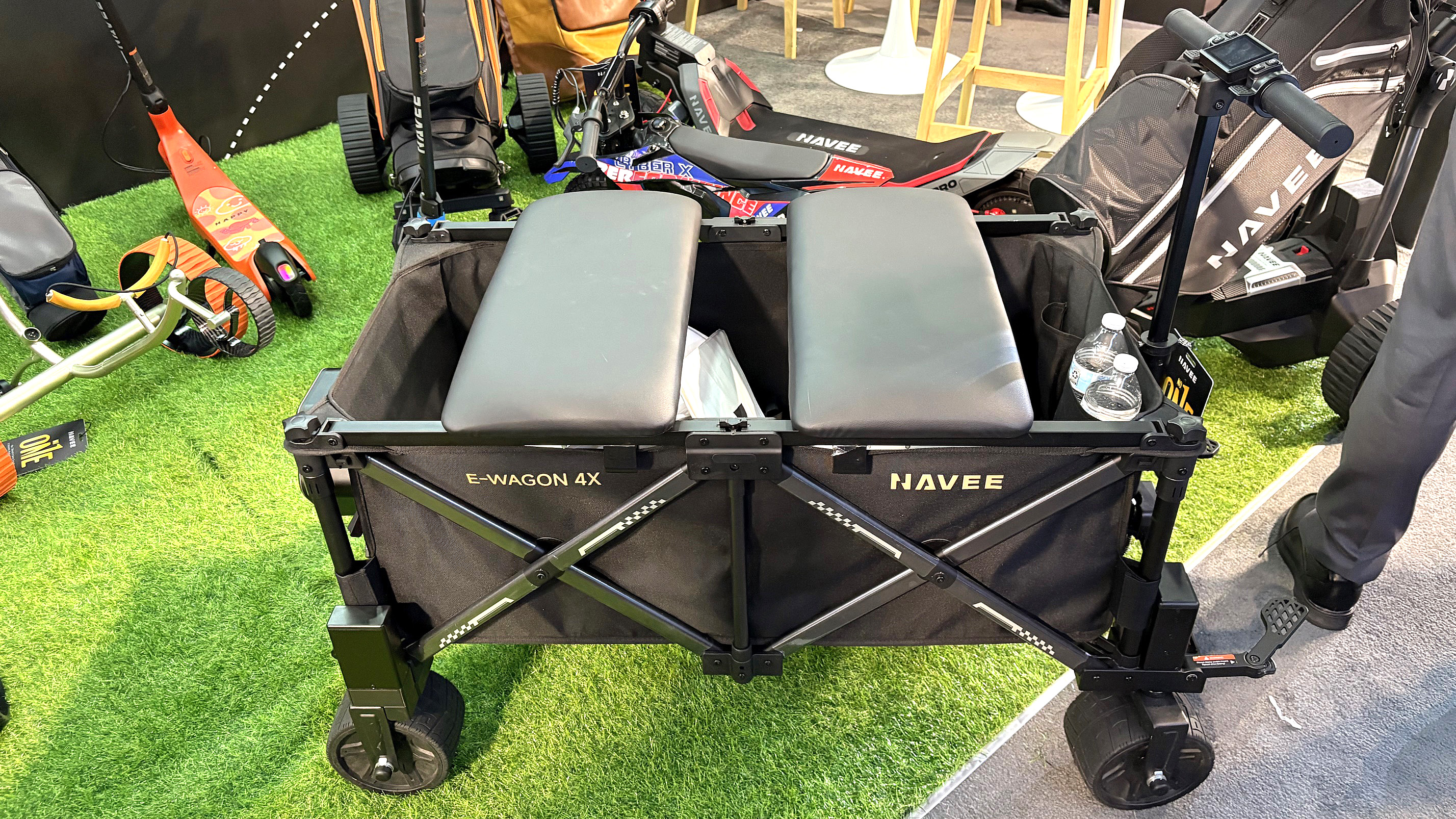Tom's Guide Verdict
A great design, intuitive and helpful app, and a low price makes the Anova Precision Cooker Nano the best sous vide machine.
Pros
- +
Smaller than previous model
- +
Efficient at cooking
- +
Good on-device controls
- +
Excellent app
Cons
- -
Bluetooth only
Why you can trust Tom's Guide
Anova helped popularize sous vide cooking with its first Precision Cooker, which made the technology much more accessible for home cooks. Several years later — and with dozens of competitors now on the market — Anova's newest machine, the Precision Cooker Nano ($99), shows why the company remains on top. It's easy to use, has a great app and is very precise. If you're looking for a smart sous vide machine, the Anova Precision Cooker Nano is the one to get.
What is sous vide?
Sous vide involves sealing a piece of uncooked food in an airtight bag, and then submerging it in a heated water bath for an extended period. The advantages to this cooking method are twofold: Because the water is heated to a precise temperature, there's no risk of overcooking. And, because you're cooking, say, meat, at a low temperature for a long period, the muscle fibers in the meat break down, resulting in a very tender cut. It's especially great when cooking tougher meats, such as pork shoulder, but it's equally good for ensuring that something like a steak is cooked to a medium-rare perfection.
Sous vide machines, such as those from Anova, are designed to keep the water in the bath a set temperature
Design
Measuring 12.8 inches tall and 2.2 inches in diameter, the Anova Precision Cooker Nano is considerably smaller than the original Anova model, which stood at 15 inches and 2.36 inches in diameter. It's still larger than the ChefSteps Joule (11 x 1.9 inches), but that device lacks a display, which, I think, is a major omission.

The all-black Nano looks sleeker than the original Anova, too. For one, the clamp used to secure it to a pot or container is smaller and integrated into the unit; on the original, the entire clamp was removable. The effect is that the body of the Nano is an uninterrupted cylinder.
One of the reasons I preferred Anova's original sous vide device over competing models was that it had a display and controls on the top of the device, so I didn't need to open a smartphone app to see the temperature setting, or how much cooking time remained.

The Nano keeps the display, but adds new functionality. Three touch-sensitive icons at the top let you view the current water temperature, the target temperature and the time remaining; the center area shows the temperature and the time, and at the bottom of the display are buttons to set the temperature and time, and to start and stop the cooking process.
Get instant access to breaking news, the hottest reviews, great deals and helpful tips.
What's new is the ability to set a timer right on the device itself; before, you needed to use Anova's app. It's a small but significant improvement.
MORE: ChefSteps Joule Sous Vide Review: A Friendly Intro to Sous Vide
Compared with the bigger Anova Precision Cooker 4.0 ($127), the Nano isn't quite as powerful. The larger model has a 900-Watt heating element; the Nano is 750 Watts). It can heat up to 8 gallons of water, versus 5 for the Nano, and it has both Wi-Fi and Bluetooth, whereas the Nano has only Bluetooth. None of these differences are going to affect the average home cook, though. The biggest omission is Wi-Fi, which would allow you to leave the house and still be notified about any issues on your smartphone.
Performance
I set up the Nano next to an original Anova sous vide, and timed how long each heated 5.5 quarts of water to 160 degrees Fahrenheit from a starting temperature of 75 degrees. I used a quick-read thermometer to verify that both machines had hit their mark, and found both were within half a degree of their temperature readings.

Although the original remained a few degrees ahead of the Nano for much of the time, the Nano jumped ahead, and hit the desired temperature in 25 minutes, 3 minutes before the original Anova. Like the older model, it beeped both when the water reached the desired temperature, and when the cooking was done. While not blaring, it was loud enough so that I could hear it from an adjacent room in my house.

I then placed a boneless chicken breast in each container, and cooked them for 1 hour. Although the internal temperature of both was the same — about 155 degrees — the chicken cooked in the Nano was slightly more done; the chicken from the original Anova was a bit juicier. Both were delicious.
App
The Anova Nano uses the same app as all other Anova sous vide machines, and the app has continued to evolve over the years. Now, the app is organized into three sections: My Recipes (where you can save favorite recipes), Guides and Recipes. The Guides section has a bunch of handy programs to the best times and temperatures to cook various things, from different meats, to eggs, fish and vegetables. What's nice is that there are photos to show the effect of cooking something for a certain time at a certain temperature. For example, if you like your chicken a little more cooked, you would choose 160 degrees for 1 hour, but if you wanted it to be very soft and juicy, you would select 140 degrees for 2 hours.
MORE: Innit App Makes Google Assistant Your Personal Sous Chef
The Recipes section is filled with curated recipes from food writers, bloggers and chefs, including J. Kenji Lopez-Alt from Serious Eats.
Bottom line
If you already have one of Anova's sous vide machines, there's no reason to upgrade to the Nano, but if you're interested in this cooking technology, there's no better place to start than with the $99 Nano. It's easy to use with or without your smartphone, but if you do pair the device with your phone, Anova's app offers a pantry full of recipes and guides that will help you make the most out of the Nano.
Credit: Tom's Guide

Michael A. Prospero is the U.S. Editor-in-Chief for Tom’s Guide. He oversees all evergreen content and oversees the Homes, Smart Home, and Fitness/Wearables categories for the site. In his spare time, he also tests out the latest drones, electric scooters, and smart home gadgets, such as video doorbells. Before his tenure at Tom's Guide, he was the Reviews Editor for Laptop Magazine, a reporter at Fast Company, the Times of Trenton, and, many eons back, an intern at George magazine. He received his undergraduate degree from Boston College, where he worked on the campus newspaper The Heights, and then attended the Columbia University school of Journalism. When he’s not testing out the latest running watch, electric scooter, or skiing or training for a marathon, he’s probably using the latest sous vide machine, smoker, or pizza oven, to the delight — or chagrin — of his family.

